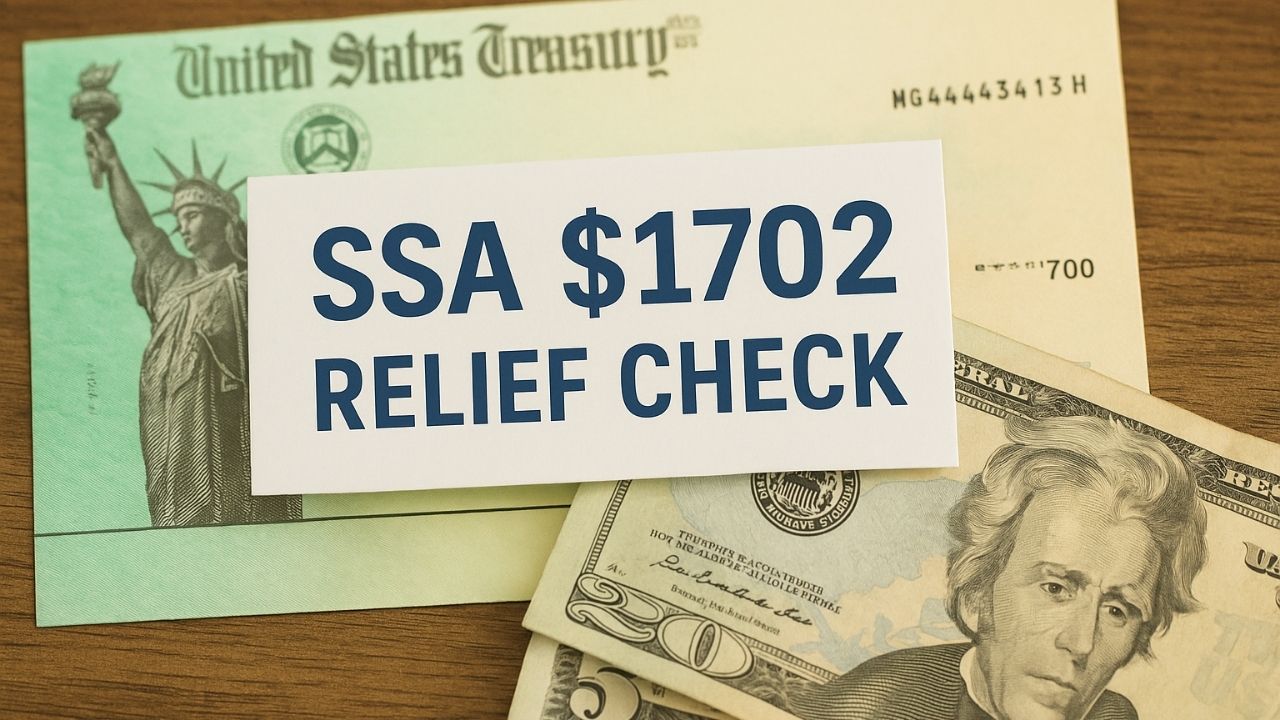With the U.S. economy still grappling with inflation and financial uncertainty, discussions around a proposed $1702 relief check from the Social Security Administration (SSA) have intensified. This potential financial assistance program could serve as a crucial cushion for low-income citizens struggling to meet their basic needs.
The relief check, if approved, will be a one-time direct payment targeted at individuals and families whose earnings fall below the federal poverty line. The primary goal is to shield vulnerable Americans from the worsening cost-of-living crisis. For households already dependent on Social Security benefits, this payout would provide an added layer of support in the face of rising prices.
While the initiative is not yet enacted, the concept has been widely circulated among policymakers and community advocates who argue for stronger financial safeguards for the economically disadvantaged. As of now, the proposal remains under review, but the potential implications have prompted millions to seek more information and prepare for eligibility.
Why the $1702 Stimulus Is Being Proposed

This one-time SSA stimulus is intended to target those most affected by inflation: seniors, disabled individuals, part-time workers, and families with minimal income sources. Rising prices in housing, food, and healthcare have disproportionately impacted people with fixed incomes, creating an urgent need for government-backed financial aid.
Beyond providing short-term relief, the proposed stimulus is also seen as a way to keep consumer spending afloat. When low-income individuals receive direct cash transfers, they typically use them to purchase necessities, which in turn stimulates local economies.
Another key motivation for this proposal is to reduce the reliance on high-interest credit or emergency loans. By offering upfront cash support, the SSA aims to help people manage their expenses without slipping into debt cycles.
Eligibility Rules: Who Might Qualify for the Payment?
While final requirements are not confirmed, a set of standard eligibility indicators is being circulated. These are expected to guide who will receive the payment once the proposal is passed.
- Must be a U.S. citizen or legal permanent resident
- Income must fall below federal poverty guidelines (adjusted per household size)
- Individuals receiving SSI, SSDI, or similar federal benefits may get priority
- Filing of 2023 or 2024 tax returns is likely required
- Applicant must not be serving time for a recent felony conviction
- Up-to-date contact and bank details with the SSA/IRS are essential
For individuals meeting these criteria, the $1702 check could be directly deposited into their bank accounts or sent via paper check depending on their preference and filing status.
Breakdown of Potential Financial Add-Ons
Some recipients may receive more than $1702, depending on their household situation. The SSA could implement an adjustment model where dependents, age, and special needs trigger additional amounts.
| Condition | Estimated Additional Payment |
|---|---|
| One or more dependent children | $400 – $600 |
| Age 70 or older | $250 – $300 |
| Receiving long-term disability | $300 |
| Living in high-cost metro area | Up to $200 extra |
These enhancements would aim to increase the fairness and impact of the stimulus by recognizing specific financial burdens.
How and When Payments Will Be Issued
If approved, the SSA is likely to adopt a three-phase rollout system to distribute the funds efficiently. This ensures that those who file on time or have direct deposit enabled get their payments without delay.
| Payment Phase | Recipient Group | Estimated Timeline |
|---|---|---|
| Phase 1 | Early tax filers with direct deposit set up | January 2025 |
| Phase 2 | Manual check recipients, document review pending | February 2025 |
| Phase 3 | Appeals, late filers, or additional verification | March 2025 |
Each group will be notified through SSA channels. Payment status can also be tracked online using a tool expected to be introduced by SSA, modeled after the IRS “Get My Payment” system.
How This Check Will Help with Essential Needs
For many Americans living paycheck-to-paycheck, this stimulus could make the difference between affording groceries and skipping meals, or paying rent versus risking eviction.
- Paying overdue utility or rent bills
- Buying groceries or household essentials
- Filling critical medical prescriptions
- Catching up on credit card minimum payments
- Repairing a vehicle for work transportation
While modest compared to broader stimulus packages, the payment is expected to stabilize short-term financial situations and reduce immediate economic stress.
Remaining Challenges and Clarifications
Despite its benefits, the $1702 SSA relief check is not yet an approved policy. As of now, it remains a proposal under consideration, meaning timelines and requirements could shift depending on political decisions.
There are also challenges in identifying and verifying the most eligible recipients without causing administrative delays. To avoid confusion, individuals are encouraged to ignore unverified social media rumors and rely only on updates from the SSA or IRS.
Applicants should also beware of scams. No government agency will ask for upfront fees or personal bank information via phone or email to release this stimulus payment.
A Vital Program Awaiting Approval
The proposed $1702 SSA stimulus check could be a timely intervention for low-income Americans weathering ongoing financial difficulties. If implemented, it will serve as a strategic economic buffer to help families manage rising living costs.
While approval is pending, preparation is key. Individuals who believe they may qualify should ensure their tax filings and SSA profiles are current, gather all necessary documentation, and follow verified updates from government agencies.